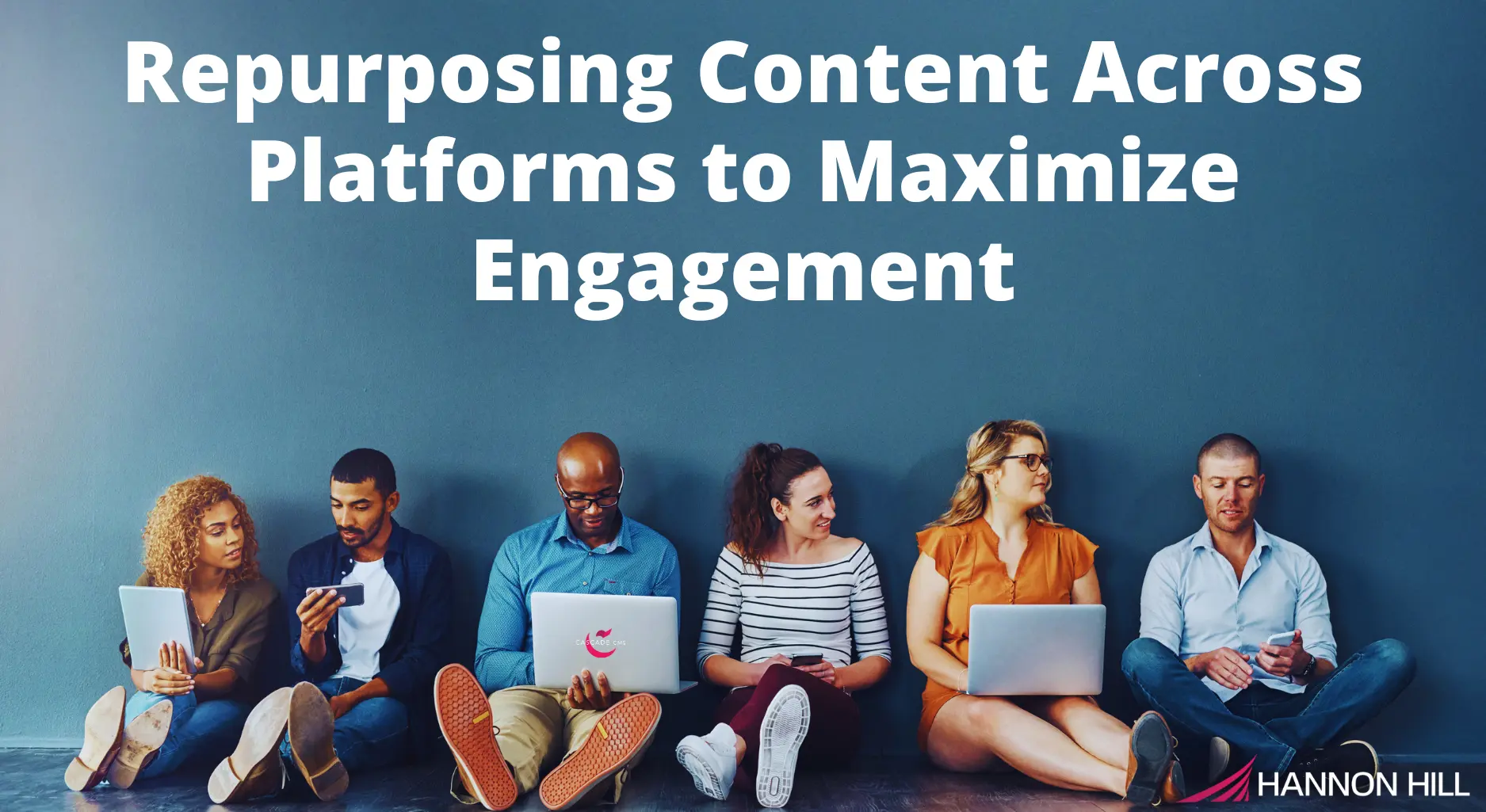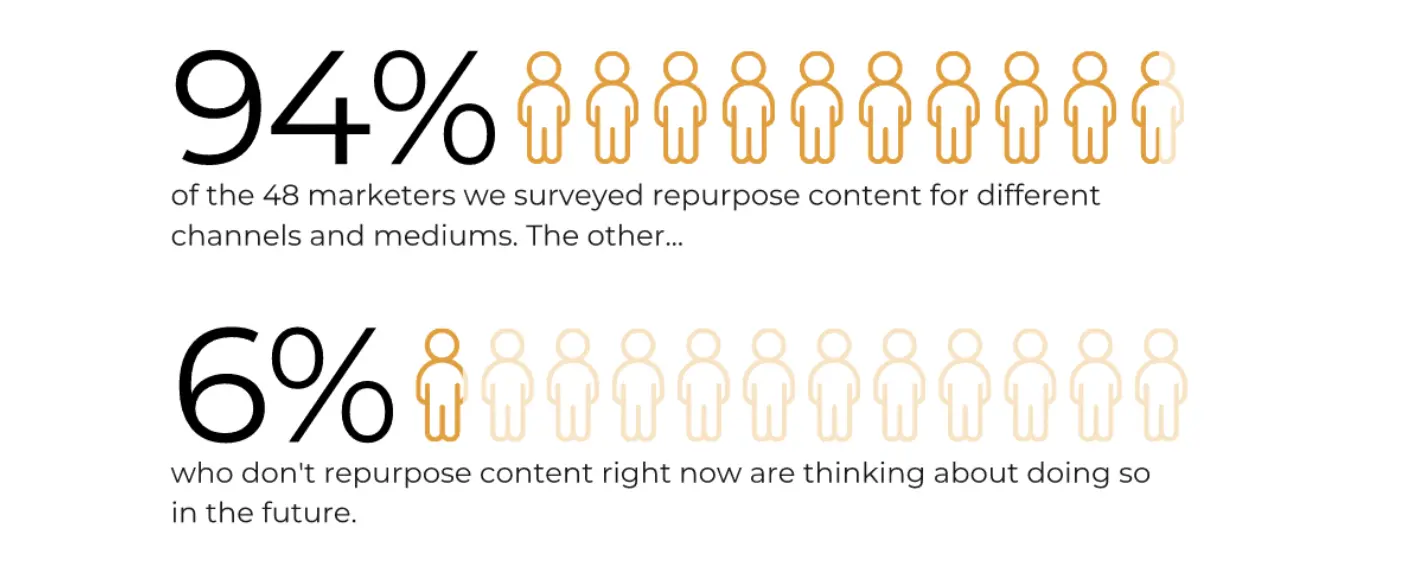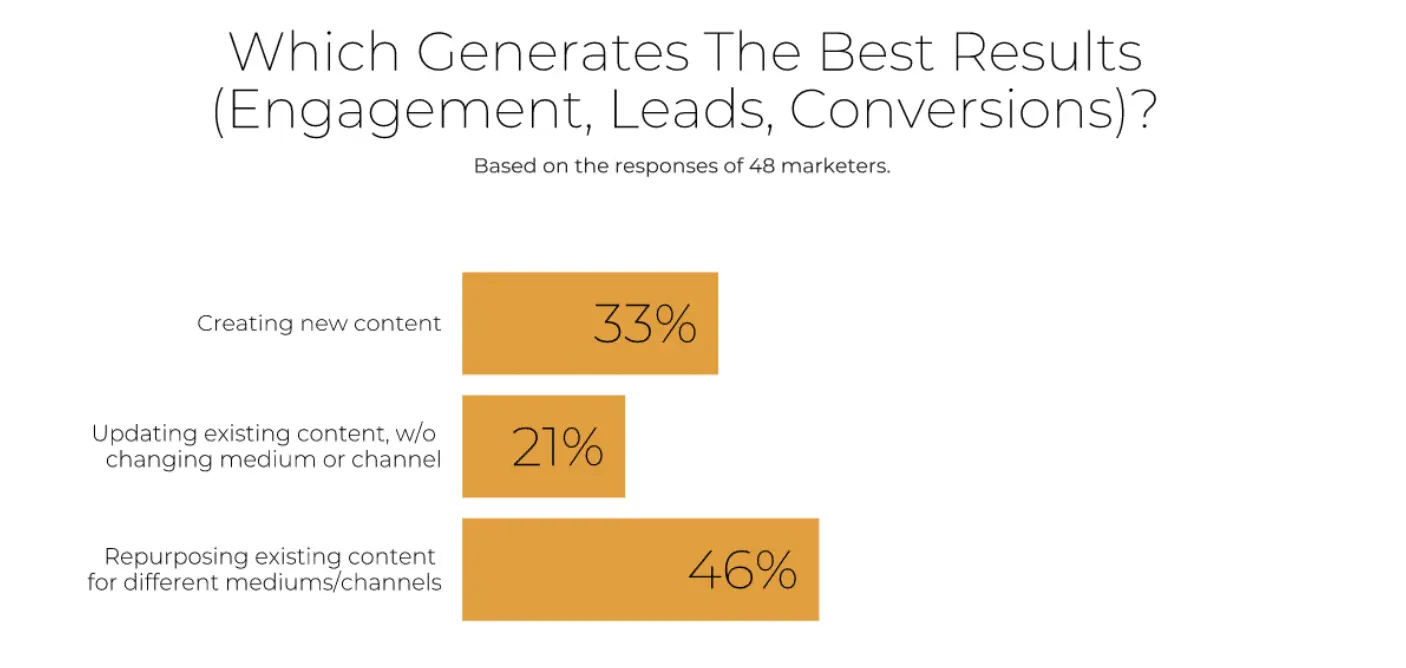
Higher education marketing teams often operate with limited resources but are still expected to deliver high-quality marketing across multiple departments.
This challenge becomes even more demanding as teams work to engage Gen-Z audiences, who expect content that is both relevant and compelling.
As a result, teams must continually adapt and refine their content strategies to remain effective and resonate across various platforms.
The key to success lies in creating great content and effectively and efficiently repurposing it to maximize its impact.
This article will explore various strategies for repurposing content across platforms, focusing on sustainable practices such as the "Create Once, Publish Everywhere" (COPE) approach. It will also discuss other essential tactics to enhance your content marketing efforts.
Creating and continuously producing new content can be daunting even to the most skilled writer. Repurposing existing content offers the occasional relief and can serve as a practical solution.
Reimagining and reformatting your content can extend its reach, improve engagement, and strengthen your institution's digital presence without constantly starting from scratch.
According to a survey by ReferralRock, an impressive 94% of marketers already repurpose their content, while the remaining 6% intend to incorporate it into their marketing strategy in the future.
Repurposing content saves time and resources and helps maintain a consistent brand message across different platforms.
Whether transforming a blog post into a video, breaking down a white paper into a series of social media updates, or converting a webinar into an email campaign, the possibilities for content repurposing are vast.
The "Create Once, Publish Everywhere" (COPE) strategy is a cornerstone of effective content repurposing. COPE allows you to create a single piece of content that can be adapted and distributed across multiple platforms in various formats.
This approach ensures consistency in messaging and branding while reducing the workload on your marketing team.
You can streamline the content distribution process by separating content from design, using small, reusable content chunks, and leveraging APIs and RSS feeds.
The COPE method is particularly beneficial for higher ed marketers who need to manage content across websites, social media, newsletters, and more, all while enhancing SEO performance.

Imagine a long, detailed guide on how to get more involved in campus life.
Instead of forcing the reader to consume it all at once, break it down into smaller, easier-to-digest pieces.
For example, turn each section into a blog post, focusing on different ways to engage as students.
Then, turn those posts into quick social media updates, eye-catching infographics, or even short videos you can watch on the go.
62% of consumers have watched video content (i.e., product demos, reviews, FAQs, unboxings, etc.) to learn about a brand or product. (HubSpot)
Pro-tip: As you break down long-form content, use targeted long-tail keywords relevant to each section. This will help you capture niche search queries and drive more organic traffic to your website.
Webinars and videos are great ways to share information, but only some students have the time or prefer to watch them. That's why turning this content into written formats, such as blog posts, texts, or email updates, is beneficial.
The average attention span has decreased to just 8 seconds, down from 12 seconds in the early 2000s. (Microsoft)
Time constraints are a significant factor, so offering shorter, digestible articles or social media posts derived from webinars helps cater to students' busy schedules.
For example, if there's an important webinar, break it down into a series of easy-to-read articles, highlighting the key points. Also, share the best quotes and insights from the video as engaging social media posts so people can catch up quickly and easily, even if they missed the original session.
Data-heavy reports and survey results can be complex for students to digest, but this information can be transformed into visually appealing infographics that make the key points more engaging and easier to understand.
These infographics are often shared on platforms like Instagram, Pinterest, and LinkedIn, where they can be easily viewed and shared.
75% of all information processed in the human brain is from visual communication, as the brain processes images 60,000 times faster than text, and 90% of information transmitted to the brain is visuals. (Sharma, Bhosle, & Chaudhary, 2012; Eisenberg, 2014).
Infographics help students retain complex information more effectively than plain text reports.
In addition to being shared on social media, infographics are also embedded in blog posts, included in email newsletters, or used as standalone content.
They are particularly effective at capturing attention and making complex information more accessible to students.
Blog posts are packed with useful insights and information that can be reshaped into email or text campaigns for students.
By converting a blog post into a series of emails or texts, the content can reach a more specific audience, encouraging students to visit the website for more details and staying engaged with helpful information.
For instance, if a blog post is about student recruitment strategies, it can be broken down into a series of emails or texts, each exploring different strategies and providing extra tips and resources to help students through the process.
In higher education marketing, where resources are often limited, the ability to repurpose content efficiently is invaluable. By leveraging strategies like COPE, breaking down long-form content, repurposing video content, visualizing data, and converting blog posts into email campaigns, you can maximize the impact of your content across multiple platforms.
In the same ReferralRock survey, 46% of marketers identified content repurposing as the most effective strategy, outperforming both content creation and updating old content.

These strategies not only help you maintain a consistent brand presence but also improve your SEO performance, making it easier for prospective students, parents, and other stakeholders to find and engage with your institution's content.
As you continue to develop your content strategy, remember that repurposing is not just about saving time—it's about amplifying your message and reaching your audience in the most effective way possible.
Repurposing content is essential for engaging your audience across platforms. With Cascade CMS, you can seamlessly implement the "Create Once, Publish Everywhere" (COPE) strategy, ensuring your content is optimized, consistent, and engaging across all pages.
Learn how Cascade CMS can simplify your workflow, enhance content governance, and maximize your team's efficiency.
Last Updated: Sep 19, 2024 11:00 AM